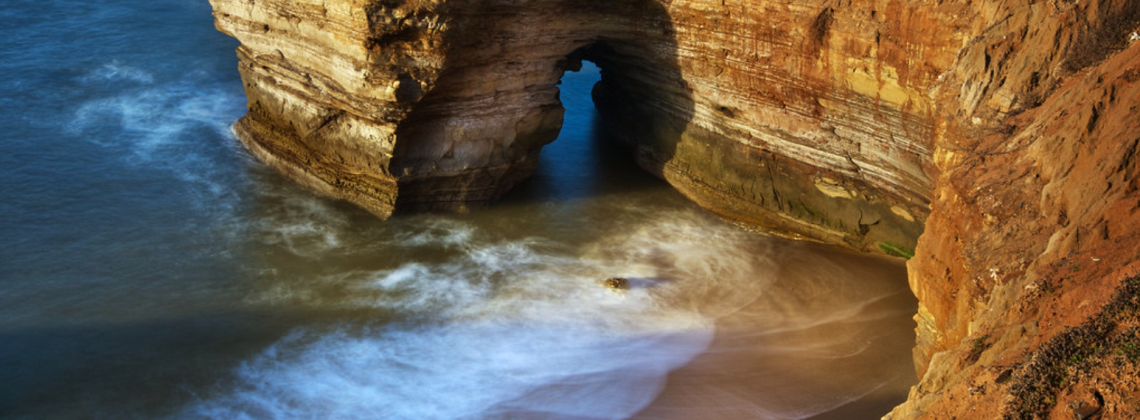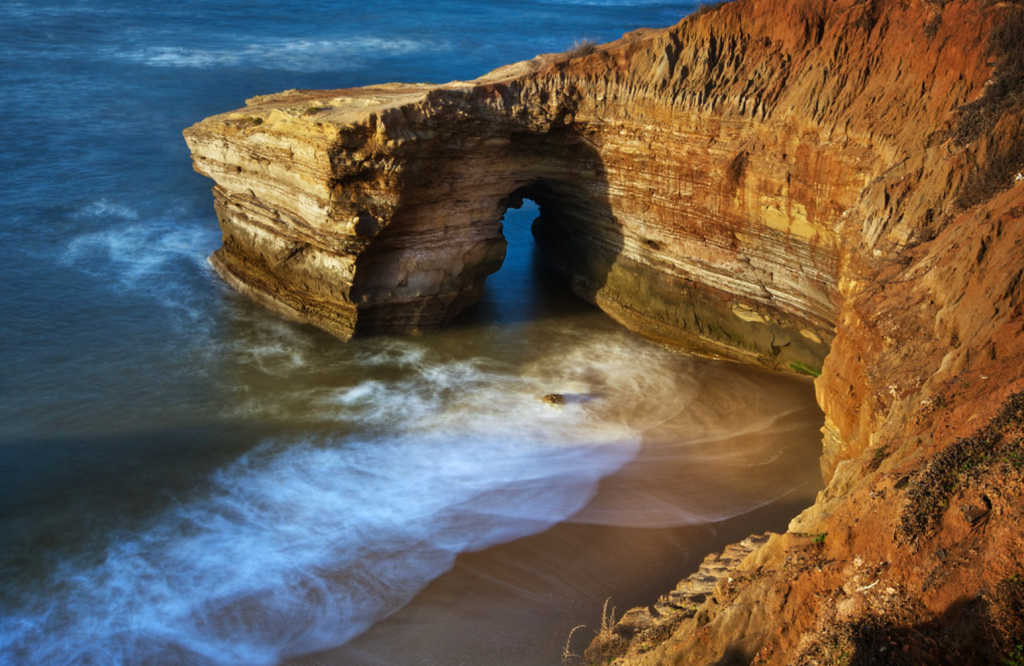

What’s so special about the Golden State?
After a 1966 curfew riot on in West Hollywood, Stephen Stills remarked, “There’s something happening here, but what it is ain’t exactly clear.” Pondering California in all its mystery is the theme of three collections of essays published over the past decade: Theology and California: Theological Refractions on California History (2015), edited by Jason Sexton and Fred Sanders; California Dreaming: Society and Culture in the Golden State (2017), edited by Ronald Wells; and Redemptive Dreams: Engaging Kevin Starr’s California (2023), edited by Jason Sexton. These essays, written by historians, theologians, sociologists, journalists, and literary scholars, are pursuing something that “ain’t exactly clear”—but that is, at the same time, provocatively Christian. California seems to be on a regionally distinctive pilgrimage.
Often invoked in all three collections are the thoughts of the philosopher and historian Josiah Royce (1855-1916) and the librarian and historian Kevin Starr (1940-2017). In “The Original Sin of California’s History,” historian Ron Wells writes this of Royce and Starr: Each man is “as much a figure in California history as a key interpreter of California history.” Jason Sexton links Starr’s eight-volume Americans and the California Dream (1979-2004) to Royce with this observation: “That dream–of a better life, a better humanity, a better community, a better future, or in Josiah Royce’s term a ‘Higher Provincialism’—depicts the story [Starr] sought to tell.” Then Fred Sanders poses the question, “Is there a Theology of California?” and roots his answer by quoting from Josiah Royce’s 1902 essay: “The nation by itself, apart from the influence of the province, is in danger of becoming an incomprehensible monster, in whose presence the individual loses his right, his self-consciousness, and his dignity. The province must save the individual.”
Regional sin and redemption are themes in these essays. Most of the authors are not cynical about the possibility of both.
The notion of California—especially Southern California—as a distinctive region with a distinctive teleology runs deep in this literature. Haunting all three collections is the opposing teleology of California Noir, a dysfunctional pilgrimage (as in Joan Didion’s Slouching toward Bethlehem) or situation (as in The Eagles’ Hotel California). In their essay “’This Could Be Heaven or This Could Be Hell:’ California, Memory, and the Theological Imagination,” Cid Martinez and Thomas Ehrlich Reifer remind readers of Carey McWilliams’ widely influential Southern California: An Island on the Land (1946). There McWilliams conjures “the road to hell paved with the ostensibly best theological intentions.” Will Katerberg follows up with a case study examining the John Birch Society and the Christian Anti-Communist Crusade in his essay, “Beating the Unbeatable Foe: Anti-Communism and Fear of Subversion in Southern California in the 1960s.”
Kevin Starr is the most influential agent provocateur in the footnotes of all three books. In his eight-volume Americans and the California Dream series, the dream is deeply Roman Catholic. Jason Sexton in “Redeeming the Dream: Revisiting Kevin Starr’s California in Theological Perspective” quotes historian William Deverell’s opinion that Starr was “the most important guide we have ever had to our state’s history and culture.” Deverell describes Starr’s eight-volume work as “the single-handedly most ambitious reconning of California that has ever been given by a single author.” Starr’s Roman Catholicism is omnivorous. In his books, everything matters if anything matters at all (as Pierce Pettis once put it). The high tide in Starr’s series occurs when the Archbishop of Los Angeles, James Francis Aloysius McIntyre, is named a cardinal in 1953. In that moment Los Angeles transcends itself and ceases to be a mere city. Starr likewise writes of Watts Towers, built by Simon Rodia, a self-educated, self-sacrificing artist, who devoted thirty-three years to raising three towers—three steeples—over Los Angeles, then buried his beloved, rusted, dismantled, 1927 Hudson at the base of the towers, a sacrifice “to the gods of the city like an ox in an ancient temple.”
But Starr has trouble hanging on to his theme of Christian pilgrimage in the later 1960s and the decades that followed. The tide begins to ebb. He fears “inhumanism” is growing in California. On the other hand, he does not give up hope. His own biography as a poor boy raised by nuns in the Central Valley and educated by generous Jesuits before getting his Ph.D. at Harvard informs his hope. What Starr does not write about is the return of the tide in the Jesus Movement in the late 1960s and early 70s.
Larry Eskridge in God’s Forever Family: The Jesus People Movement in America (2013) focuses on California’s role—especially Southern California’s beach culture—as an epicenter to what quickly became a nation-wide Jesus Movement. Robert S. Covolo gives particularity to this in his essay for Theology and California titled “From the Beach Boys to Surfer’s Chapel: A Theology of California Surf Culture.” Covolo’s discussion of the Soul Surfer Movement offers balance to Eileen Luhr’s chapter “Seekers, Surfer, Yogi: The Progressive Religious Imagination and Politics of Place” in Golden States: How California Religion went from Cautionary Tale to Global Brand (2024). Luhr studies Southern California as a particularly good site for examining the progress of American identity and spirituality, thus picking up on Darren Dochuk’s From Bible Belt to Sunbelt: Plain-Folk Religion, Grassroots Politics, and the Rise of Evangelical Conservatism (2010).
The question of whether California is more than just an inert “site” for study and is actually a place with teleological purpose is not just a question for theologians. Multi-disciplinary collections like these affirm the role of pencil-wielding, page-turning, life-pondering humanities in the search for understanding. They exemplify expansive possibilities in the growing academic fields of environmental or ecological humanities that are devoted to integrating humans into their natural situations. St. Augustine believed that all creation is on pilgrimage. John Muir mused that forest fires were “as if Nature were ever repenting,” but such “destruction was creation, progress in the march of beauty through death.” Is California on pilgrimage? Can the recent wildfires in Los Angeles County be an act of repentance? Is beauty on the march?
Historian of Late Antiquity, Peter Brown, once called Ethiopia a “micro-Christendom.” California might be a micro-Christendom too. At any given moment, any one distinctive can be accounted for singly, but keep gathering distinctives and something greater appears. What appears “ain’t exactly clear,” but the accumulation encourages one to ponder.
Richard Mouw confesses in “The Enigma of California: Reflections on a Theological Subject” that, even though a native of New Jersey, he has never reflected on “what the northern New Jersey of my youth ‘means.’” He is intrigued by the way Joan Didion and Josiah Royce could make it “life’s business” to try to understand California. For Mouw, “To understand the South is to explore roots; it is to grasp-traditions. To understand California is to monitor trends; the task requires general surveying rather than serious digging.” Jason Sexton makes it clear that Kevin Starr never claimed to be a serious digger. Starr was a librarian, the State Librarian of California, a gatherer of flowers, a honeybee who gathers pollen and organizes it in a comb, then hoping for honey. (Redemptive Dreams has a blurb on the back from Governor Arnold Schwarzenegger praising Kevin Starr.) These three collections are surveys. No one essay offers a decisive answer. Cumulatively, they make the reader muse, “Maybe. . . .”
Jack W. Hayford begins The Charismatic Century: The Enduring Impact of the Azusa Street Revival noting that on January 1, 1901, Pope Leo XIII dedicated the twentieth century to the Holy Spirit. Imagine his cardinals’ surprise when the Charismatic Century burst forth in the world from Southern California.
Rick Kennedy is Professor of History and Environmental Studies at Point Loma Nazarene University in San Diego, California. His most recent book is Winds of Santa Ana: Pilgrim Stories of the California Bight (2022).
Image credit: Daniel Peckham – Sunset Cliffs, San Diego, California
This is a thoughtful and helpful review, Rick. I am delighted with the phrase “pencil-wielding, page-turning, life-pondering humanities”.
Along with the Charismatic Movement coming from Azusa Street, California also has been a stronghold for Church of God in Christ congregations. (I am a member of one in Sacramento, where my brother-in-law is the pastor.) One significant development from COGIC churches in the Bay Area was the music made famous by the Edwin Hawkins Singers (and some of us are old enough to remember them). Each Sunday, singer Elaine Kelly, who sang lead in “Come and Go with Me to My Father’s House,” sits behind me (I sit with my fellow deacons up front) and next to my wife. She is a gracious reminder of those wonderful musical moments more than a half-century ago.